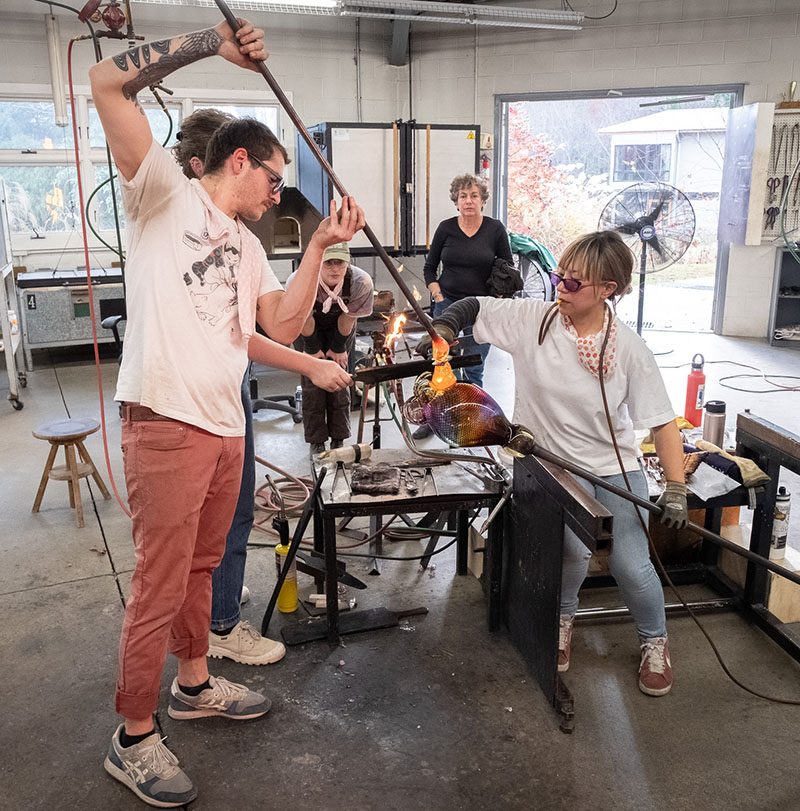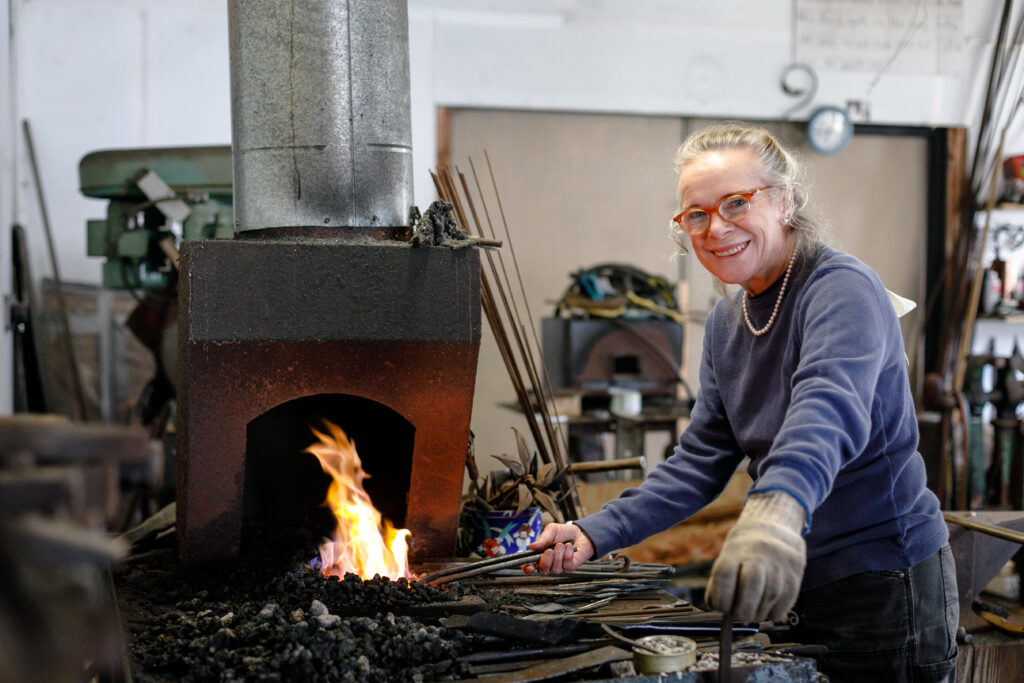
If anyone can be said to be one of “Penland’s own,” it would be blacksmith and sculptor Elizabeth Brim. Although she started out working in ceramics, a Penland jewelry workshop in the 1980s sparked a lifelong interest in metals that quickly turned into a passion for working with hot steel.
Elizabeth was Penland’s iron studio coordinator from 1995–2000 and then settled permanently into a house and studio just a mile from the school. Over three decades, she has taught many workshops at Penland and other craft schools including Peters Valley in New Jersey and Haystack in Maine. She has demonstrated at numerous blacksmithing conferences, organized two symposia at Penland, and been a role model and inspiration for countless aspiring blacksmiths.
Elizabeth Brim is known throughout the craft world for her life-sized, steel replicas of traditionally feminine objects such as hats, dresses, pillows, and flowers; for her expressive and fluid use of the material; and for her facility at inflating steel forms with compressed air.
Her work has been exhibited at the Mint Museum in Charlotte, North Carolina, the North Carolina Museum of Art, The Houston Center for Contemporary Craft, and the Metal Museum in Memphis, Tennessee, which named her as their 2009 Master Metalsmith.
We are proud to honor Elizabeth Brim as this year’s Penland School of Craft Outstanding Artist Educator. In honor of the occasion, we asked her a few questions about her long relationship with Penland.
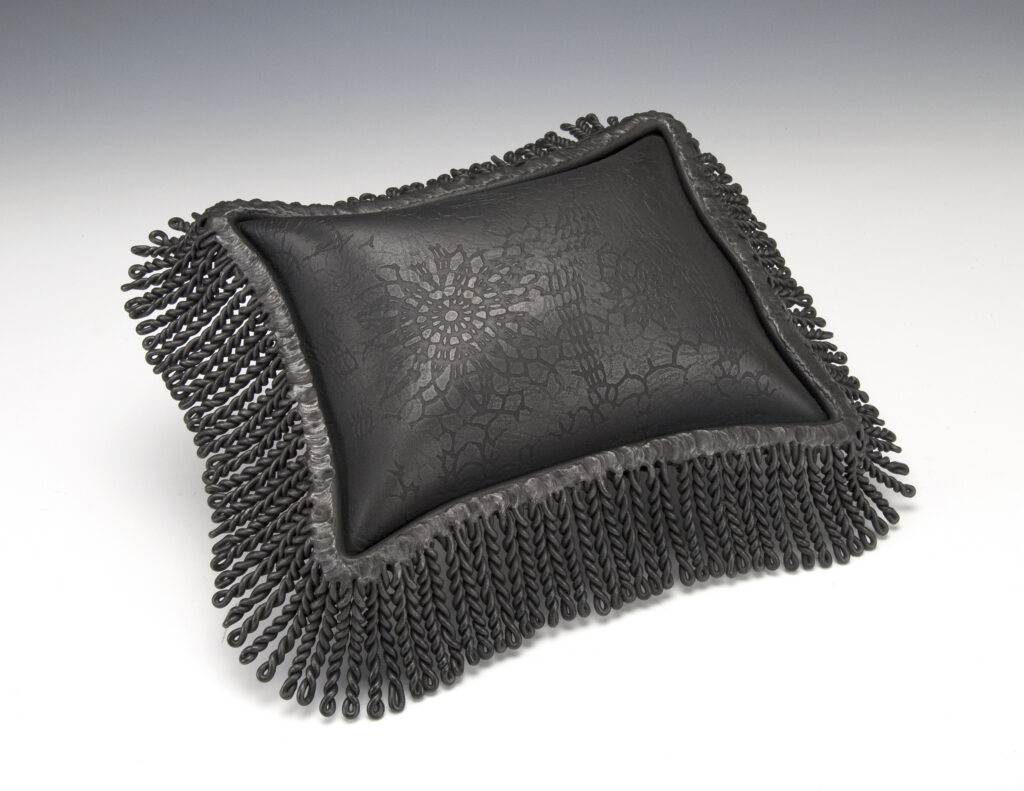
INTERVIEW WITH ELIZABETH BRIM
Did you always like to make things?
Yes! My mother and grandmother made frilly dresses for me and my sister. We played with the scraps of fabric they had left over and made things from those. Our mother encouraged our creativity, and we took private lessons in painting. Instead of commercial paper dolls and coloring books, Mama got blank paper for us to draw on and cut up. When I majored in art in college, I thought teaching at the college level would be the ideal job for me. So I continued my studies to get an MFA in printmaking.
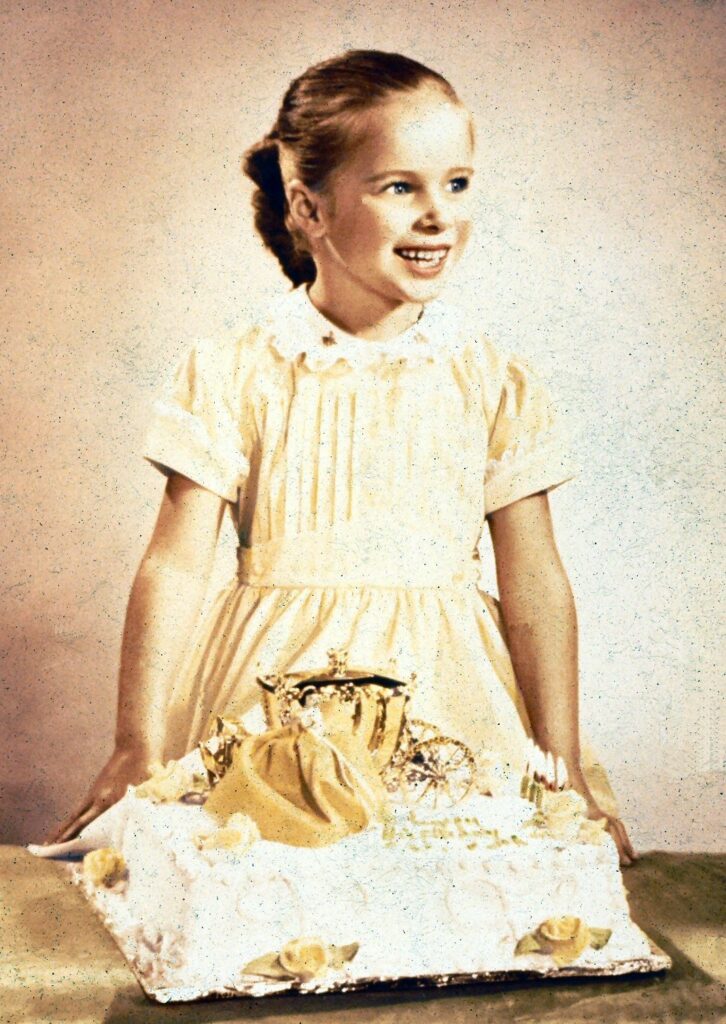
How did you end up at Penland?
The head of the art department in my hometown told me that there was going to be a job available teaching ceramics and encouraged me to go to Penland to learn how to make pots. I did that in the spring of 1980 and I got the job teaching. I also fell in love with everything about Penland. I loved the mountains and being fully immersed in making things. I especially loved and became addicted to being around interesting, creative and fun people from places all around the world. So I came back as often as possible and started taking classes in metal and jewelry making.
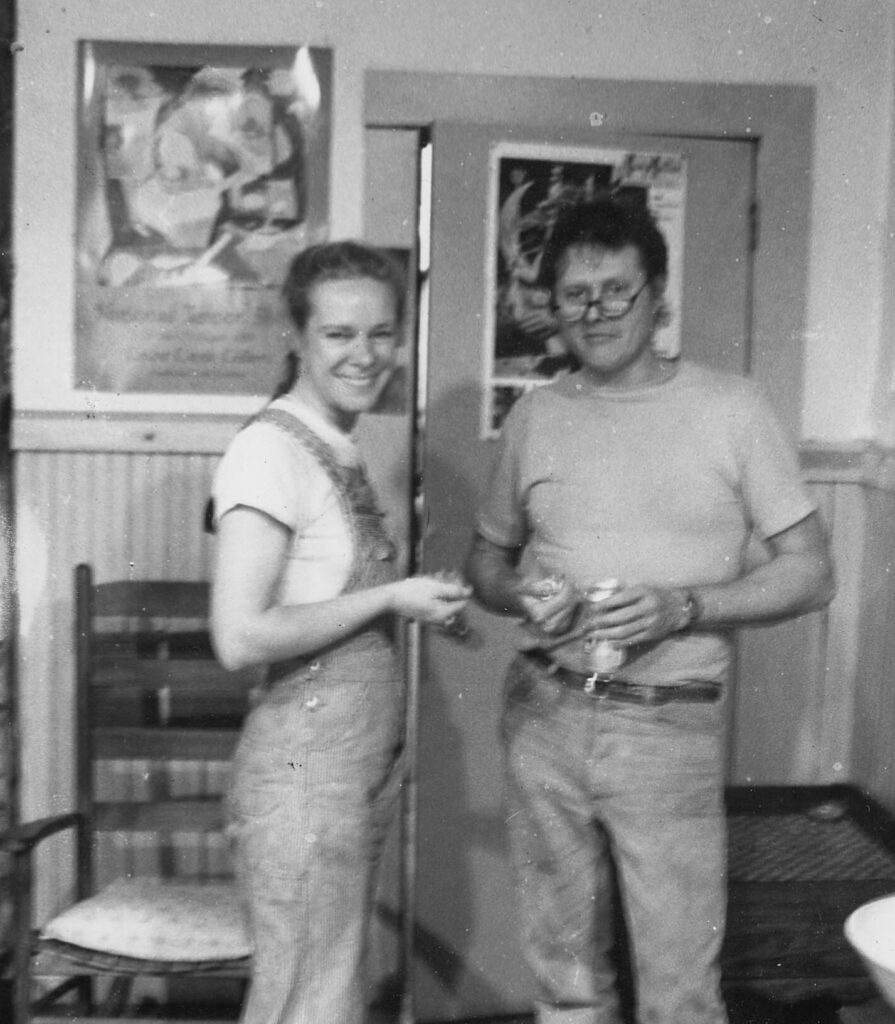
How did you discover blacksmithing… and when did you start wearing your iconic pearl necklace?
In the spring of 1985, I was taking a concentration with Marvin Jensen in metals. A core student who was in my class got an opportunity to apprentice with an artist and decided to leave the core program early. I was asked if I could stay at Penland for the summer and fill in as a core student. My job was to get dinner out on weeknights and clean up the kitchen afterwards. I could take classes during the day. Without that opportunity, I doubt if I would have ever taken a class in blacksmithing! When I told my mother, a very proper Southern woman, that I was signed up to take a blacksmithing class she got quiet for a minute and then said, “Elizabeth, I DO NOT approve of that. Blacksmithing is NOT a ladylike thing to do.” I was concerned but still wanted to take the class. I told my friend, Tom McCarthy, who was also a core student, what Mama had said. Tom immediately replied, “Elizabeth, just wear a string of pearls and you will be ladylike.” I’ve been wearing them ever since.
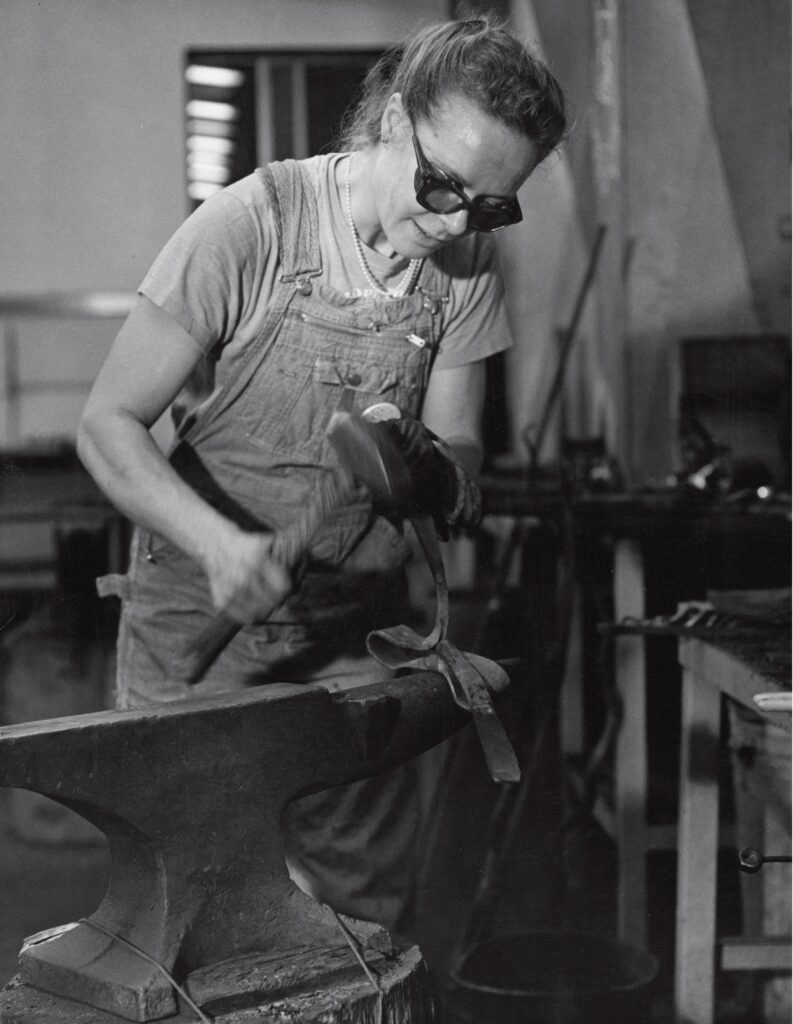
How did you help grow the Penland iron program?
In 1987, I heard from Penland’s leadership that they were concerned about low enrollment in blacksmithing classes and that the future of the program was far from secure. Hunter Karhier was assistant director at the time and thought it would be a good idea to host an iron symposium to demonstrate national interest in the creative aspects of ironwork and get attention for the Penland iron program. It was to be a unique opportunity for blacksmiths to get together formally to discuss art and ideas in iron. I was hired to facilitate the project and was very enthusiastic about promoting iron at Penland. The symposium, “Expressive Design in Iron,” was a huge success and received attention from ironworkers internationally.
Tell us about your time as the Penland Iron Studio Coordinator.
I became the studio coordinator of the Penland Iron Studio in 1995. That’s when I finally moved to Penland full-time. The studio was thriving with a full schedule and diverse range of courses. Jean McLaughlin, who became Penland’s Director in 1998, recognized the activity and success of Penland’s Iron program and began fundraising to provide a worthy studio. We moved into our new iron studio in the fall of 2000. The first project there was to build the iron gate out of forged scraps from the old iron studio and pieces donated by artists and instructors who had been important to the development of the program. I was building my own little studio at the same time Penland’s new studio was being built. So, with the Penland iron studio and program vigorous and successful, I left the job to concentrate on my own artwork. I still teach at craft schools occasionally, with Penland, of course, always being my favorite and my home.
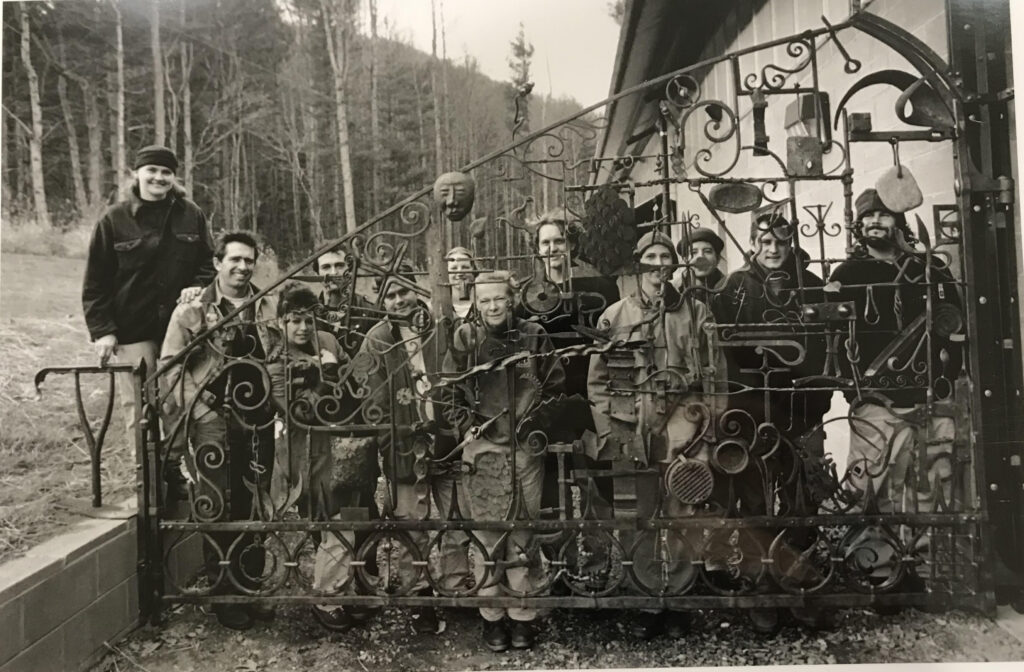
What work are you most known for and how do you create it?
The first sculptural piece I forged was a pair of steel high-heeled shoes. I’m known for making objects out of steel that look soft, like fabric. It’s probably due to the influence of my mother and grandmother and their sewing. I have made several aprons, camisoles, and ballerina tutus. I enjoy the challenge of making ruffles, bows, tassels, fringe, and fancy trim in steel. I guess I’m most known for inflating steel forms to look like pillows. I also love to forge things that look like flowers and botanical elements. In these forms I employ forge welding. This involves heating metal parts until they get to the state I call “Slobbering Yellow “ and hitting them with a hammer to join the pieces together. I have a lot of fun making my forged sculptures!
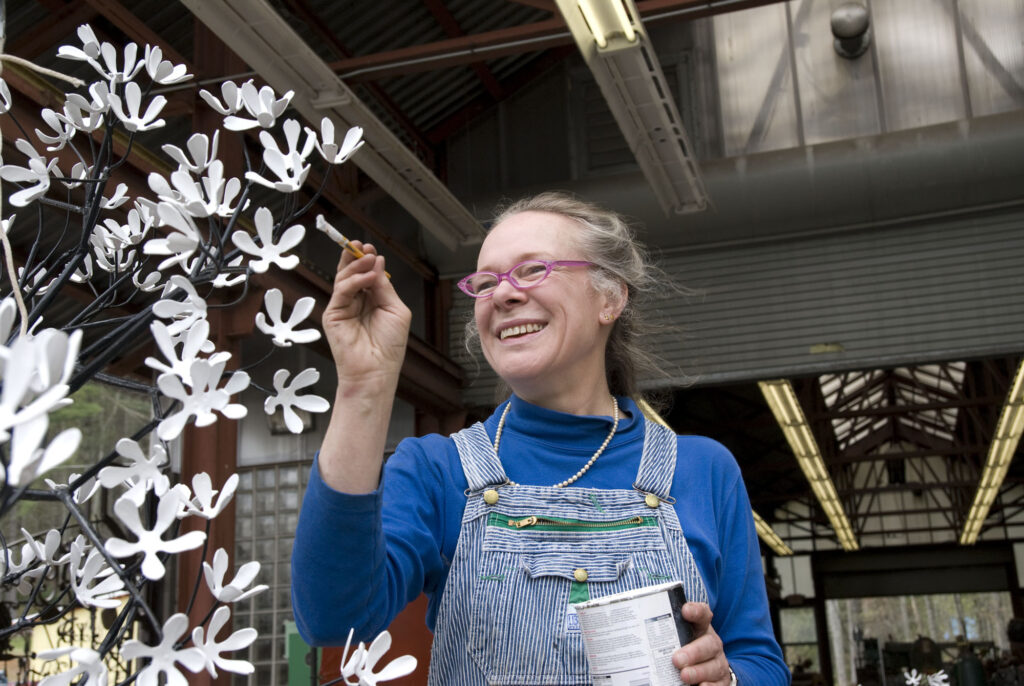
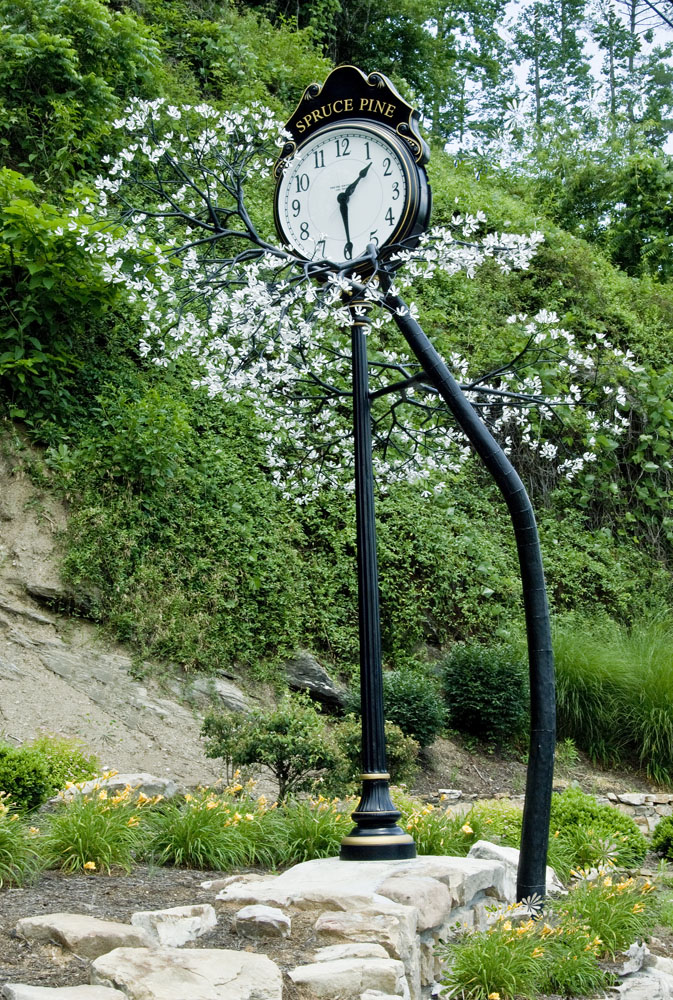
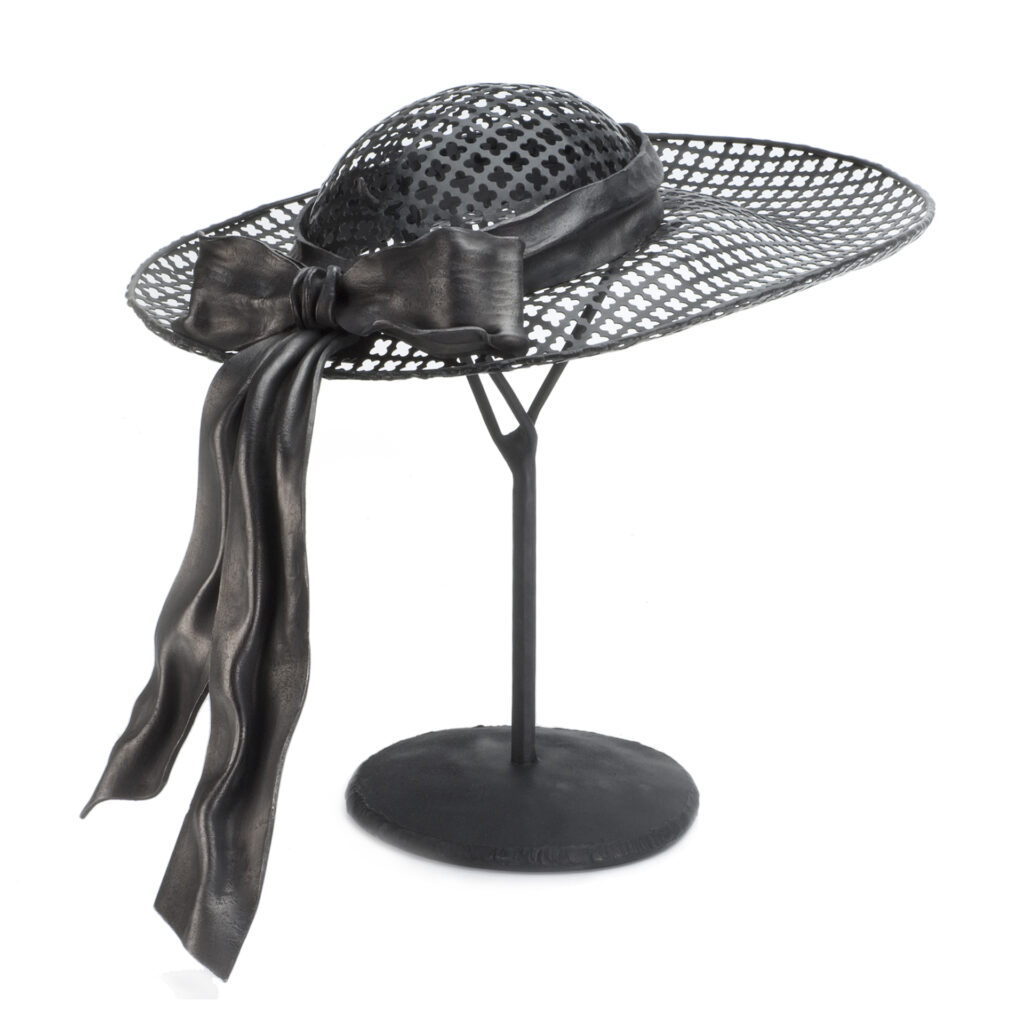
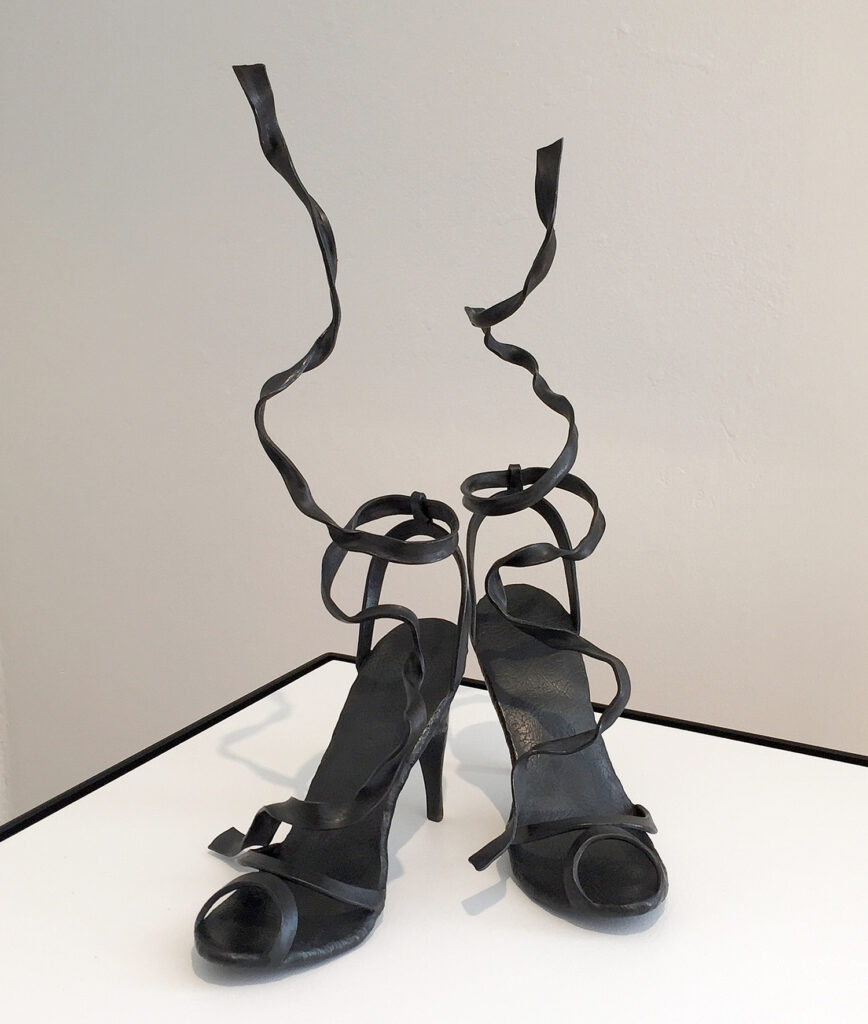
Join us as we celebrate Outstanding Artist Educator Elizabeth Brim under the tent at the Penland Benefit Auction. LEARN MORE.



 Collaborating on great pottery designs
Collaborating on great pottery designs Custom chess set
Custom chess set Making knives
Making knives Participating in “Mending Day” with Celia Pym and her mending workshop
Participating in “Mending Day” with Celia Pym and her mending workshop “Free Painting Station”
“Free Painting Station” Visiting Mount Mitchell
Visiting Mount Mitchell